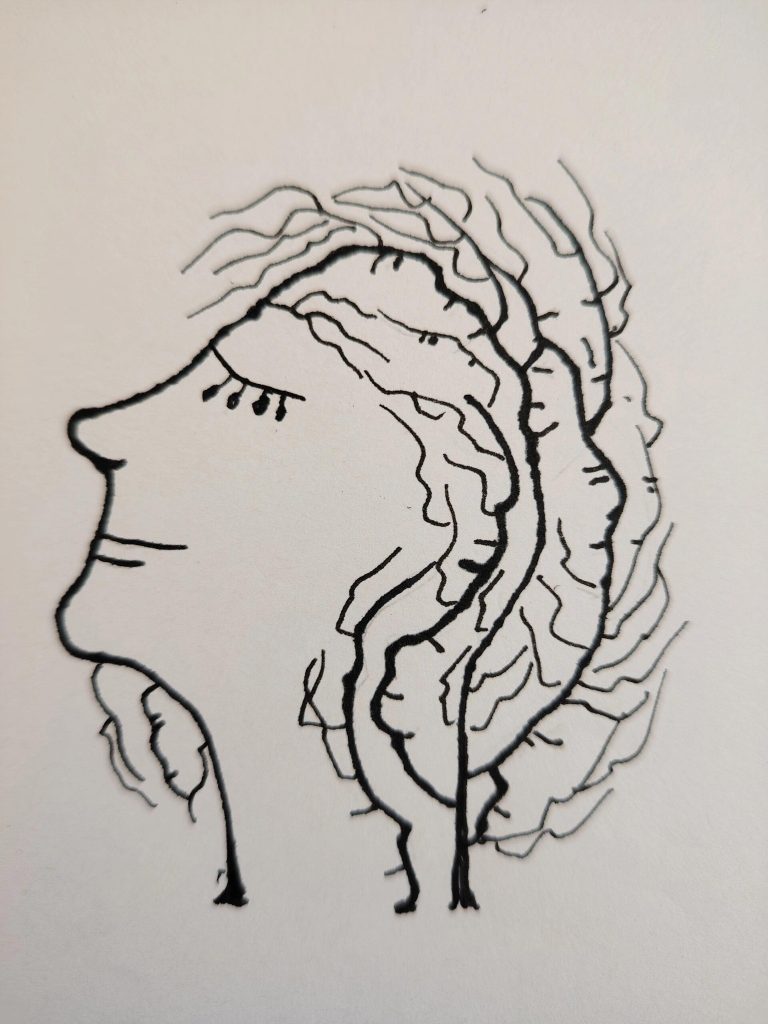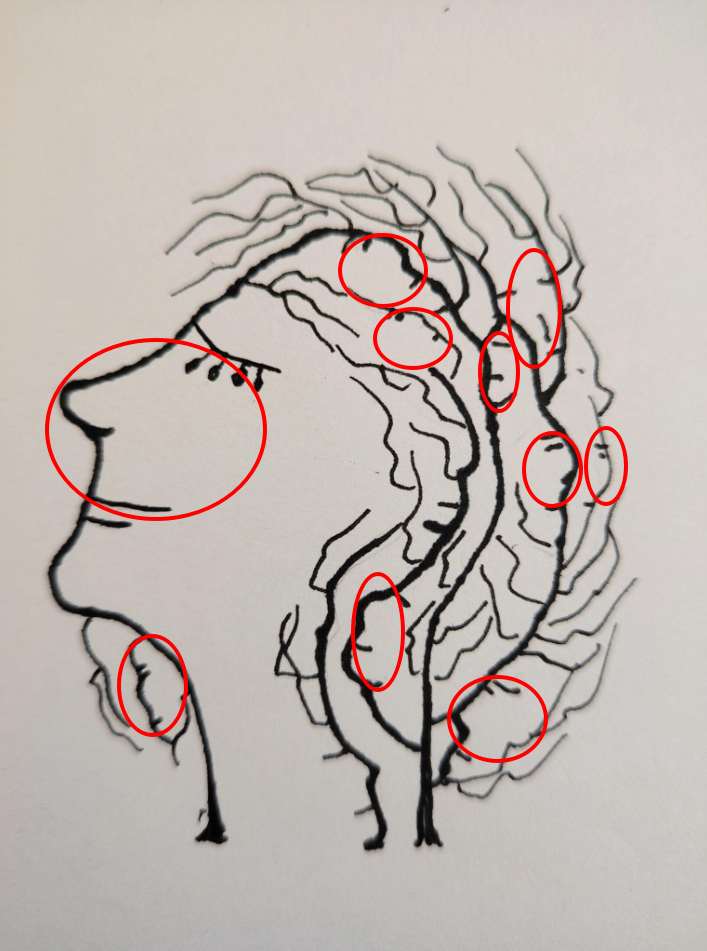The Art of Perception: Discovering the Hidden Beauty in a Tree-Faced Illusion
When Nature Meets Imagination
What do you see at first glance? A face of a serene woman in profile? Or a bunch of bare, twisted trees reaching toward the sky? If your answer is both, congratulations—your brain just did a little dance of visual magic. This clever optical illusion, where the silhouette of a woman’s face is formed entirely from a grove of leafless trees, is a stunning example of how our minds love to turn chaos into clarity.
It’s art. It’s nature. It’s psychology. And it’s a perfect reminder that what we perceive isn’t always what’s really there.

The Double Image Phenomenon
This drawing is what’s known as a double image illusion, where two distinctly different scenes are merged into one. You’ve likely seen others like it—the famous “old woman or young girl” sketch, or the “vase or two faces” illusion. These visuals tug at our brain’s natural craving for patterns.
In this case, the branches of the trees bend and twist in such a way that they create the perfect contours of a human face. The eyelashes? Little twigs. The lips? Curved bark. Even the shape of the nose and chin blend seamlessly into the trunks.
It’s clever. It’s captivating. And it makes you look twice. Or three times.
Why Does Our Brain Fall for This?
Here’s the thing: our brains are lazy—but in a good way. They’re wired to spot familiar things quickly, especially faces. It’s called pareidolia—the tendency to see meaningful images in random patterns.
That’s why we spot animals in clouds, faces in the moon, or a woman’s profile hidden in trees. Our brain says, “Hey, this mess of lines kinda looks like a face,” and boom—it fills in the gaps. Once you see it, you can’t unsee it. That’s the fascinating trick of optical illusions like this one.

Art That Sparks Curiosity
This illusion isn’t just a technical trick. It’s emotional. There’s something peaceful—almost haunting—about the way the trees mimic the softness of a woman’s face. It evokes a story, doesn’t it?
Maybe it’s a symbol of how humans and nature are intertwined. Maybe it’s a metaphor for inner reflection—how we can find ourselves in the most unexpected places. Or maybe it’s just a cool drawing that makes you pause mid-scroll and say, “Whoa.”
Whatever meaning you attach to it, that’s the power of visual storytelling.

The Hidden Talent Behind Simplicity
Let’s not forget—creating a drawing like this takes serious talent. It’s not just about drawing a face or sketching trees. It’s about merging them. The artist had to understand how shadows, shapes, and space would all come together to pull off the illusion.
That kind of art is subtle. It doesn’t scream for attention. It whispers. And that whisper lingers in your mind far longer than any loud, flashy image ever could.

Seeing Beyond the Obvious
This piece invites a gentle challenge: Don’t take things at face value (pun intended). Whether it’s a person, a situation, or even a scribbled doodle on paper—there’s always more beneath the surface.
This drawing reminds us to look closer. To pause. To wonder. It’s not just about what you see; it’s about how you choose to see it.
So next time you pass by a cluster of trees, look again. Maybe there’s a face watching. Or maybe it’s just your imagination coming out to play—and that’s the best kind of vision to have.

Conclusion: Where Art and Awareness Intersect
In a world racing toward the next click, swipe, or scroll, a simple illusion like this slows us down. It makes us curious. It invites us to think, to reflect, and to appreciate the quiet beauty that lies in everyday forms.
This tree-faced illusion isn’t just a clever drawing—it’s a gentle reminder to embrace perspective, to look deeper, and to celebrate the art of seeing the unseen. Because sometimes, the most profound stories are hidden in the simplest lines.